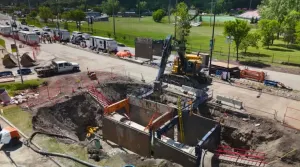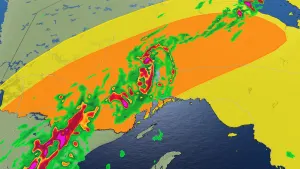
Planting billions of trees could help save the climate, study finds
Reforesting nearly a billion hectares of land could help save us from the climate crisis
The climate crisis looms large for human civilization, threatening our food sources, our health, our security, our homes and even our lives. As we struggle to kick the habit of using fossil fuels to power our daily lives, a team of researchers has made a very important discovery that could help save us from ourselves.
It may seem a bit overly simplistic, but a new study out of the Crowther Lab, at the Swiss Federal Institute of Technology in Zurich (ETH Zurich), suggests that the solution to our problem could be to just plant more trees.
"Our study provides a benchmark for a global action plan, showing where new forests can be restored around the globe," says study lead author Dr Jean-François Bastin. "Action is urgent and governments must now factor this into their national strategies to tackle climate change."

This map shows the total land available that can support trees across the globe (total of current forested areas and forest cover potential available for restoration). Credit: ETH Zurich/Crowther Lab
"We all knew restoring forests could play a part in tackling climate change, but we had no scientific understanding of what impact this could make," says Professor Tom Crowther, a senior author of the research study. "Our study shows clearly that forest restoration is the best climate change solution available today and it provides hard evidence to justify investment."
By using machine learning to crawl through satellite images of Earth's surface, the researchers identified 4.4 billion hectares of land on Earth that could support continuous tree cover. Currently, only 2.8 billion hectares of that available land is covered by trees, leaving space for another 1.6 billion hectares. If we only count land that is not being used for cities, agriculture, etc, that leaves around 900 million hectares - roughly the size of the United States - where we can immediately start planting trees.
It's important to note, the researchers say, that this is not land that is inherently unsuitable for forests, such as wetlands or grasslands, but areas that can easily support tree growth, such as degraded forests.
According to Crowther, if we started this tree-planting initiative now, it could reduce the carbon dioxide content of the atmosphere by up to 25 per cent. That would drop CO2 levels from the current concentration of 413 parts per million to around 310 parts per million. That is roughly where levels were at back in 1958 when we first started measuring global CO2 atop Mauna Loa.

This graph shows the full record of carbon dioxide measurements at Mauna Loa, Hawai'i, starting in 1958 and ending on July 4, 2019. Credit: Scripps Institution of Oceanography, UC San Diego
Although this is a straightforward solution, it does not mean this is something we can put off, or take our time with.
As Crowther points out: "we must act quickly, as new forests will take decades to mature and achieve their full potential as a source of natural carbon storage."
The top three countries where this forest restoration could take place, according to the study: Russia, with 151 million hectares, the United States, with 103 million hectares, and Canada in third place, with 78.4 million hectares.

This map shows the land available for forest restoration (excluding deserts, agricultural and urban areas; current forestland not shown). Credit: ETH Zurich/Crowther Lab
Deforestation and forest loss from other sources (ie: wildfires) is a growing concern. In just 2017, for example, Global Forest Watch tallied up nearly 30 million hectares of tree loss around the world. In 2018, tropical 'old growth' rainforests suffered the loss of around 12 million hectares (global losses are still being tallied for the year).
Although studies have shown that over the past few decades global gains in forest cover have compensated for global losses, the gains have mostly been spread out through low-density Boreal forests, such as in Canada and Siberia. Meanwhile, the losses have mostly been in regions with 90-100 per cent tree density. If this continues, losses will begin to far outweigh gains.
By slowing and hopefully halting deforestation, and planting more trees to restore degraded forests, we have an exceptionally good method of carbon capture at our fingertips, to accompany our transition away from fossil fuels.
"It is vitally important that we protect the forests that exist today, pursue other climate solutions, and continue to phase out fossil fuels from our economies in order to avoid dangerous climate change," Crowther said.
Sources: Crowther Lab/ETH Zurich | Scripps Institution of Oceanography | Global Forest Watch











